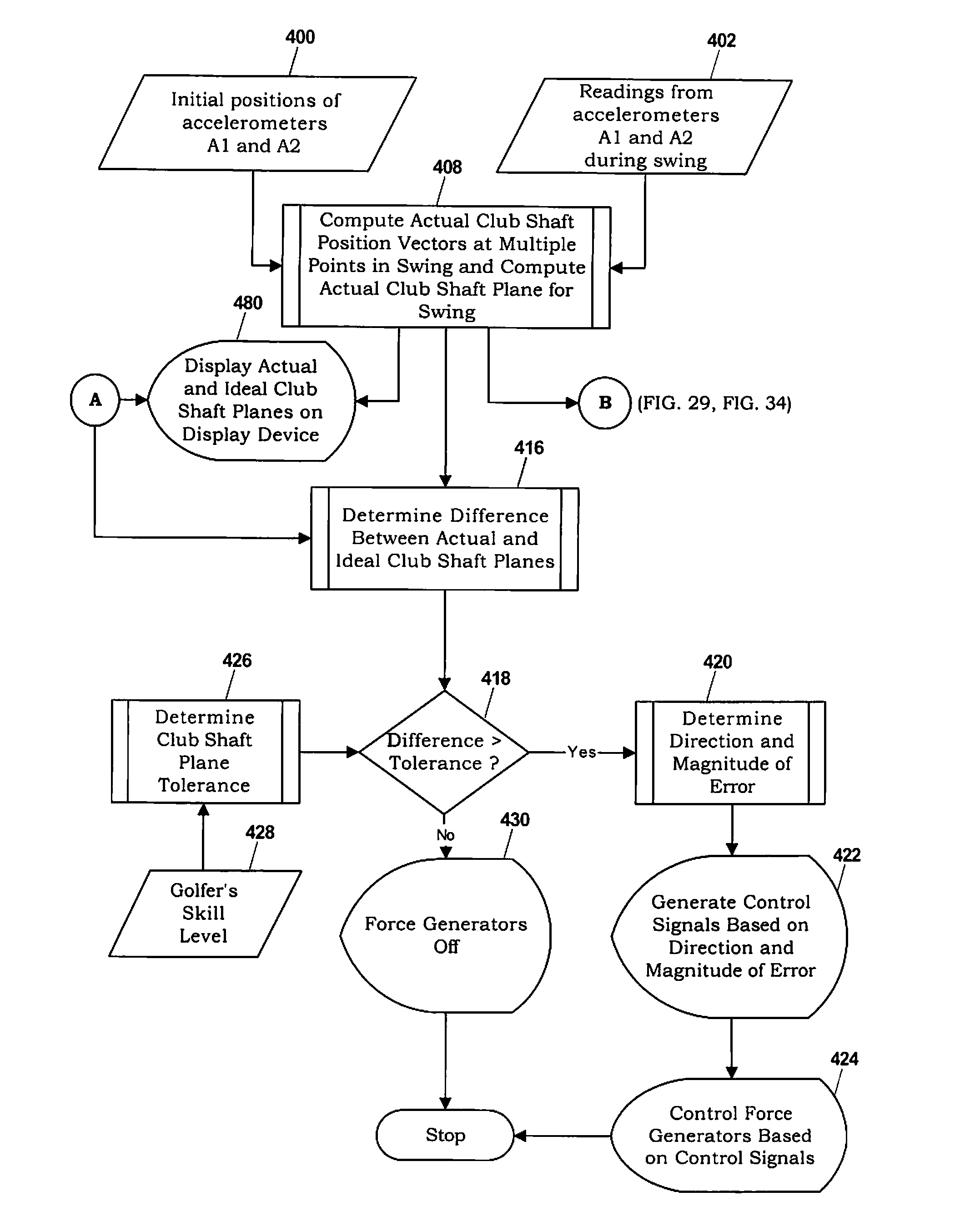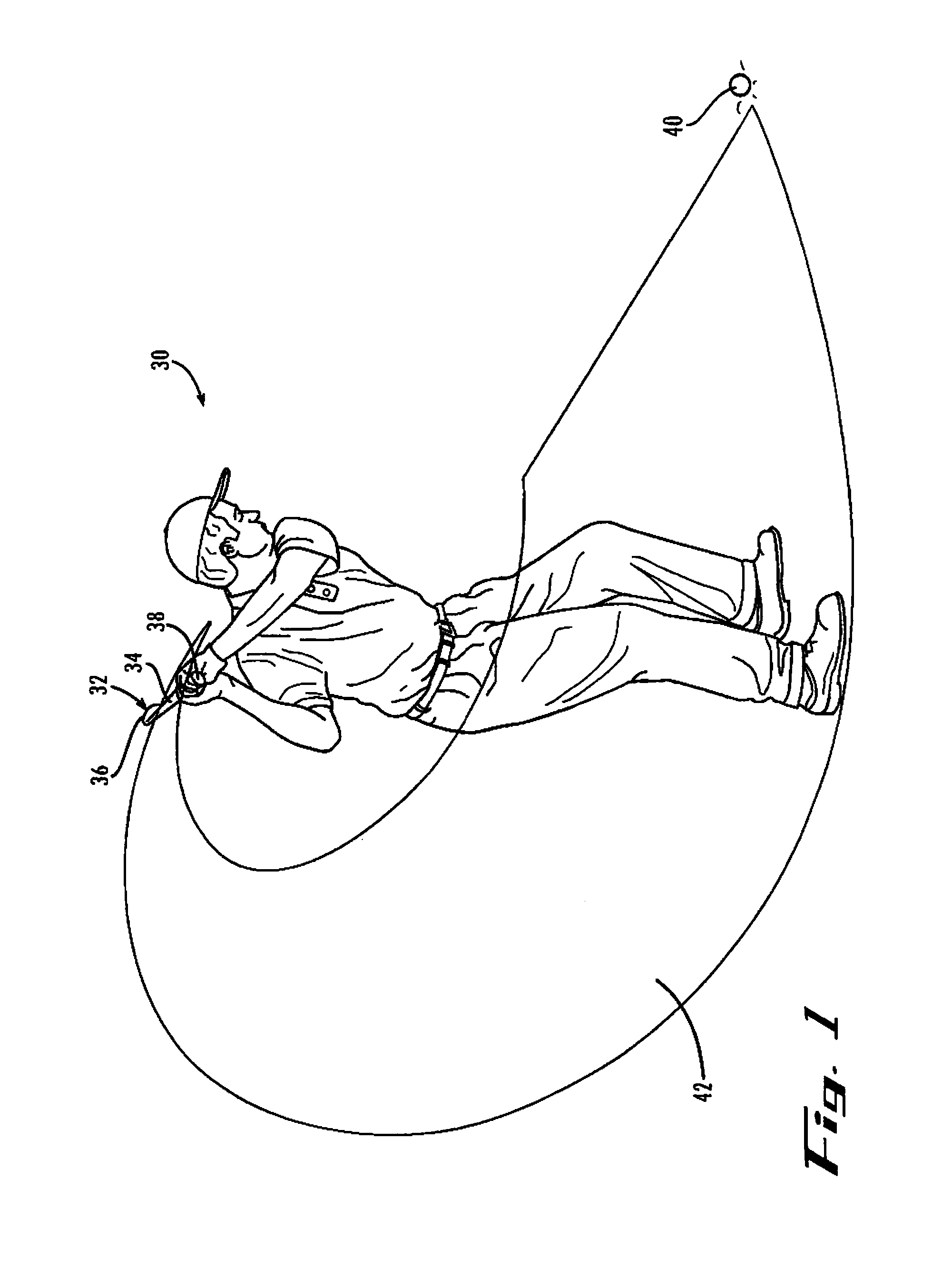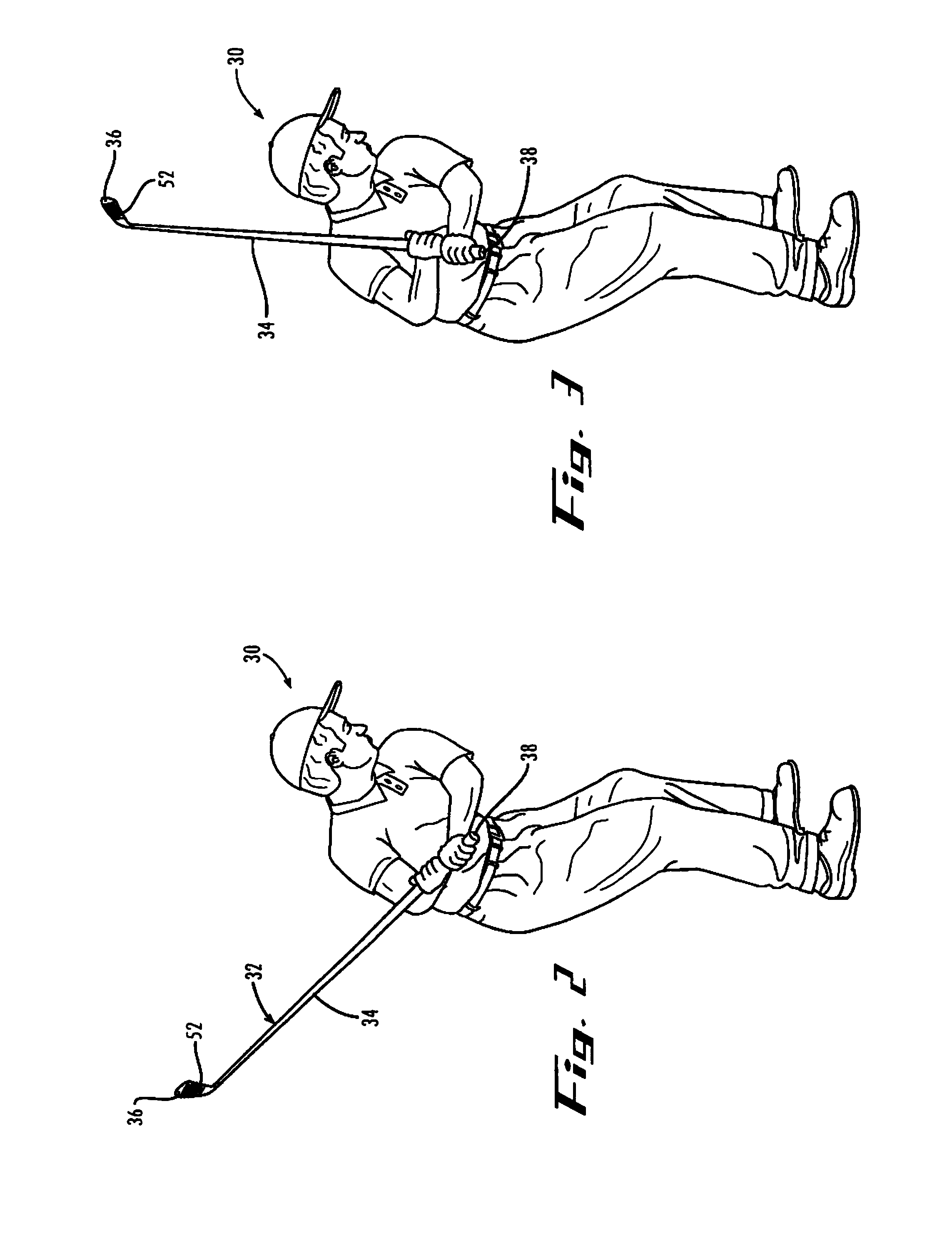Muscle training apparatus and method
a technology of muscle training and muscle training, applied in the field of muscle trainer and muscle training method, can solve the problems of unsatisfactory dominant muscle condition and its attendant disadvantages, and achieve the effect of balanced muscle strength of the sets of opposing muscles
- Summary
- Abstract
- Description
- Claims
- Application Information
AI Technical Summary
Benefits of technology
Problems solved by technology
Method used
Image
Examples
first embodiment
[0117]As shown in FIGS. 4 and 5, the muscle trainer 44 of the invention includes a hollow shaft 54 having a flat motor-mount pad 56 formed at a distal end of the shaft, and a grip 58 attached to an outer side of the shaft adjacent a proximal end thereof. The grip 58 is formed from a soft non-metallic material, such as, for example, leather, of the type typically used to form the grip of a conventional golf club, such as, for example, the club 32 (FIG. 1).
[0118]Referring to FIGS. 4 and 5, the muscle trainer 44 further includes an electric motor 60 having a rotatable drive shaft 62 extending from one end of a motor housing 64. One end of the motor housing 64 is placed against a first side 66 of the pad 56, and is attached to the pad, such as by screws 67. The drive shaft 62 extends through an opening 69 formed through the pad 56 to a second side 68 of the pad.
[0119]The motor 60 could be of the type typically used to power radio-controlled miniature models such as, for example, model a...
second embodiment
[0143]As shown in FIG. 10, the muscle trainer 104, which is the invention, includes a hollow shaft 106. The muscle trainer 104 differs from the muscle trainer 44 (FIG. 4) in that the length of the shaft 106 is shorter than the length of the shaft 54. Otherwise the muscle trainers 44 and 104 are substantially identical. Except for the shaft 106, the elements of the muscle trainer 104 are identified in FIG. 10 by the same numbers as the corresponding elements of the muscle trainer 44 shown in FIG. 4.
[0144]In the motor-mounted arrangement of the muscle trainer 104 illustrated in FIG. 10, a common axis of the motor 60 and the blades 72 extends at an angle of ninety degrees from the shaft 54 in the same manner as in the motor-mounted arrangement of the muscle trainer 44.
[0145]The muscle trainer 104 is preferably used in the same manner as the muscle trainer 44, as described above. The shorter shaft 106 allows the muscle trainer 104 to be used in a closer-quarters environment, such as, fo...
third embodiment
[0147]With that in mind, as shown in FIGS. 12 and 13, the muscle trainer 108 is the invention. The muscle trainer 108 includes a hollow shaft 110 having a flat motor-mount pad 112 formed at a distal end of the shaft, and a grip 114 attached to an outer side of the shaft adjacent a proximal end thereof. The grip 114 is formed from a soft non-metallic material, such as, for example, leather, of the type typically used to form the grip of a conventional golf club, such as, for example, the club 32.
[0148]The shaft 110 is formed with a first straight section 116 which includes the grip 114, and a second straight section 118 which extends at an angle of substantially ninety degrees from the section 116 at a juncture 120 of the first and second straight sections. The shaft 110 is further formed with a third straight section 122, which extends at an angle of substantially ninety degrees from the second straight section 118 at a juncture 124 of the second and third straight sections. The fir...
PUM
 Login to View More
Login to View More Abstract
Description
Claims
Application Information
 Login to View More
Login to View More - R&D
- Intellectual Property
- Life Sciences
- Materials
- Tech Scout
- Unparalleled Data Quality
- Higher Quality Content
- 60% Fewer Hallucinations
Browse by: Latest US Patents, China's latest patents, Technical Efficacy Thesaurus, Application Domain, Technology Topic, Popular Technical Reports.
© 2025 PatSnap. All rights reserved.Legal|Privacy policy|Modern Slavery Act Transparency Statement|Sitemap|About US| Contact US: help@patsnap.com



